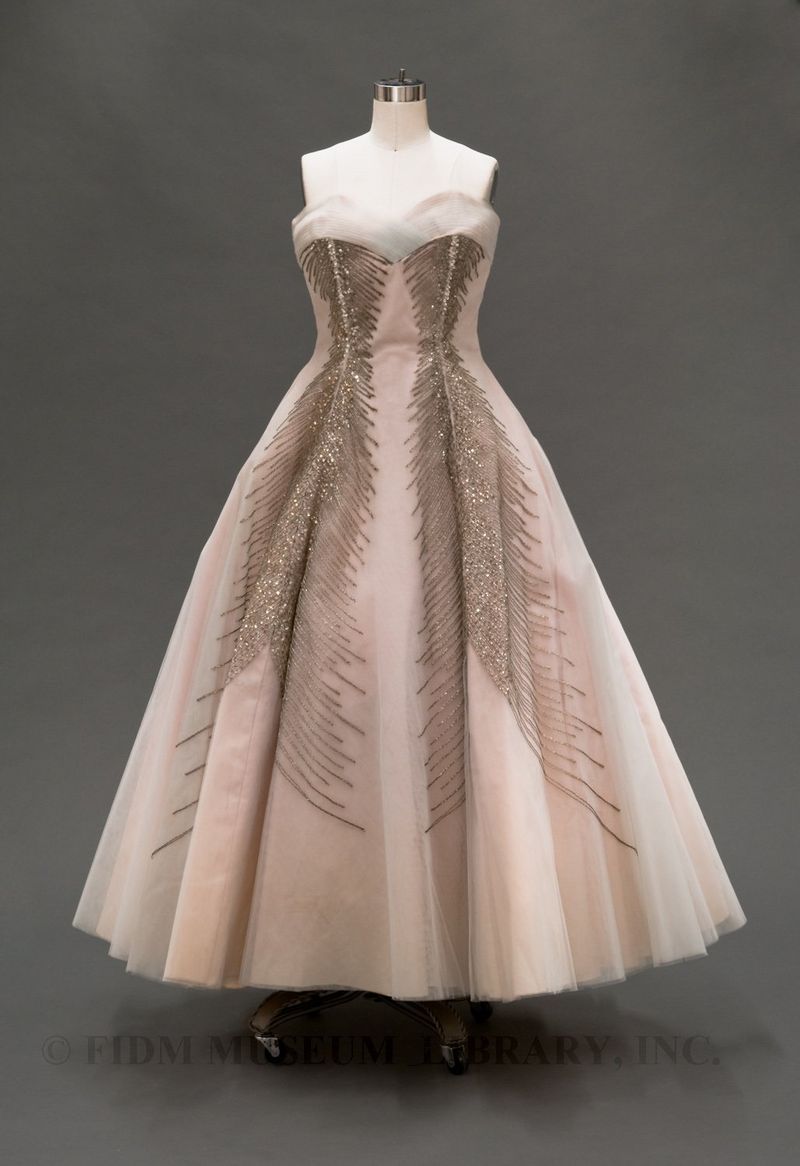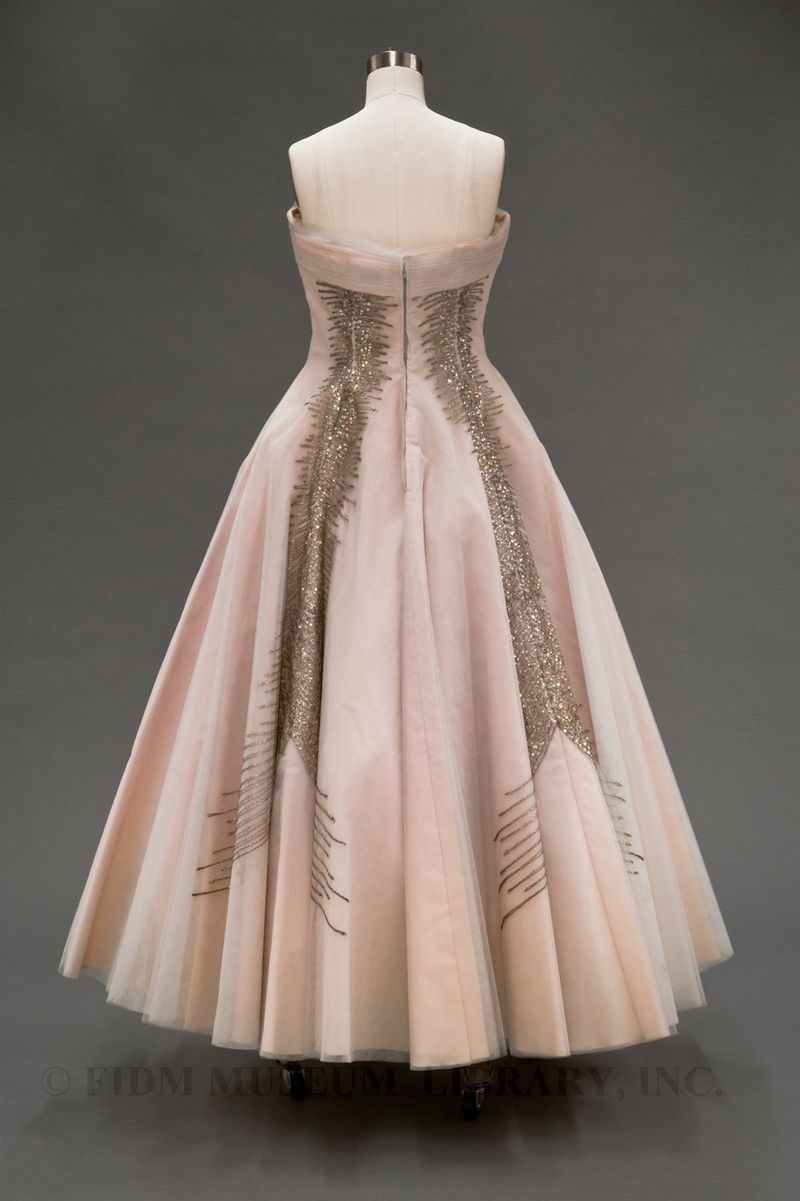Gothe evening gown, early 1950s
How do you pin a corsage on a strapless gown? This question was posed by florists in the early 1950s, when strapless evening and ball gowns were all the rage. In lieu of pinning the corsage on a shoulder strap, florists suggested creative alternatives. Create a floral medallion by tying a single bloom with silver cord, suggested a Pennsylvania florist in 1950. Or use a wire base to distribute the weight of the flowers more evenly; this solution was the idea of a Chicago floral design instructor.1
 c. 1953
c. 1953
Gift of Geary Roark
S2009.1000.3
Corsages aside, strapless gowns sometimes provoked outrage over the amount of skin they revealed. In 1951, Princess Margaret, younger sister of the current Queen Elizabeth, wore a strapless gown at the opening of a London concert hall. This was the first time a member of the royal family wore a strapless gown in public.2 Princess Margaret had been interested in the style since 1949, when she purchased a strapless Christian Dior evening gown. Her mother was reportedly shocked, and insisted on the addition of straps! Though the British royal family isn't known for being fashion-forward, there were other conservative protests against the style. In 1953, a New Jersey school board stopped short of forbidding strapless gowns at dances and proms. Instead, the school superintendent appealed to parents and students to wear conservative gowns with straps or sleeves to school functions.3
Despite conservative resistance to the style, strapless gowns were the evening style during the early 1950s. Christian Dior popularized the style beginning in the late 1940s when he introduced beautifully embellished strapless evening gowns. The evening gown pictured in this post was designed by Gothe, a New York dress design and manufacture firm led by husband and wife Irene Zerner Gothe and David E. Gothe. Though Irene was head designer, David was credited with helping to design many of the company's dresses. Gothe produced mainly evening wear, examples of which were featured in The New York Times and Vogue during the late 1940s and into the 1950s.
This Gothe gown features a rounded sweetheart neckline and glittering sequin embellishment. It has bodice boning and princess seams, which are reinforced at the waist with curved metal rods. This inner structure helps gown maintain its elegant silhouette. The soft pink color, in this case with a white net over-layer, is typical of the era. Other popular colors included lilac, seafoam green, pink, ivory and biscuit. In December 1952, Vogue called pale evening gowns the "great evening fashion of the season."4
1 "Girls With Strapless Gowns May Hang Corsages on Neck." Los Angeles Times 16 Mar. 1950: 27.
2 "Princess Wins Her Fight--To Wear a Strapless Gown." The Washington Post 8 July 1951: S3.
3 "Prom Gowns Censored." The New York Times 4 June 1953: 37.
4 "The Pale Dress: A Jewel in Itself." Vogue Dec. 1952: 58.
